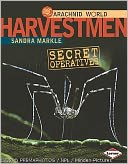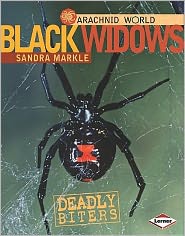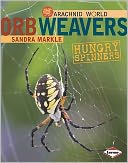 |
| 978-0-7613-5042-2 |
 |
| 978-0-7613-5038-5 |
 |
| 978-0-7613-5039-2 |
We have a display up right now at the library of spider books. I can't keep it filled, which is a late validation for my position in the argument that I had with a former director, who thought we had an excessive number of spider books. There is something about spiders - and their arachnid relatives - that fascinates people, even while their shoulders hunch in visibly as they look at the pictures. When I was about 13 I did a science fair project on tarantulas that went all the way to earning a superior at the state science fair - in part because the female judging panel was so impressed that I held my example (they wouldn't.) This reaction tempts many publishers into sensationalizing them, focusing on the fear factor to sell - a hugely unnecessary tactic. Fortunately, while the subtitles in this series do offer some extra excitement, the overall sensationalizing is not a trap Lerner has fallen into.
This is in fact an excellent series for younger readers who want to get serious about the subject. Markle goes beyond the basic information in some subtle and refreshing ways. A diagram of the animal's innards, for example, doesn't just label the parts, but tells what their main purpose is (i.e. "CAECA: These tubes store food.") There are plenty of close-up pictures to cause the reader to either shiver or lean in closer for a better look (bottom of the spider's foot = very cool!) Little blurbs here and there offer interesting facts (some spiders, such as black widows, can grow a new legs if they lose one) that draw the reader into reading the rest of the page if he is just skimming.
Each book includes web sites to visit, glossary, free downloads, and an activity, making these perfect for research or classroom use. I would highly recommend these for 3rd grade all the way up through high school. My only complaint is that they weren't available when I was 13. I coulda' gone national!
No comments:
Post a Comment